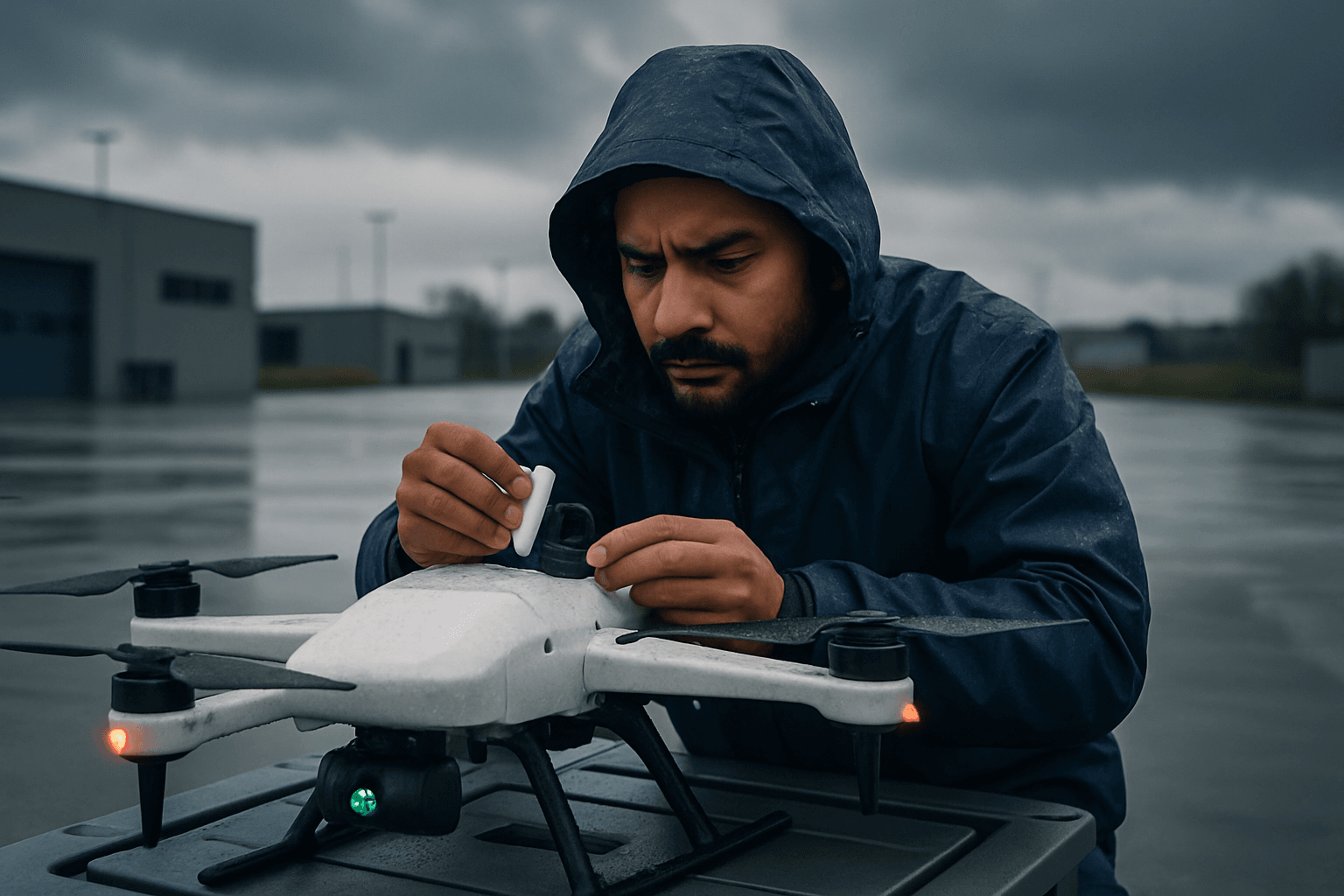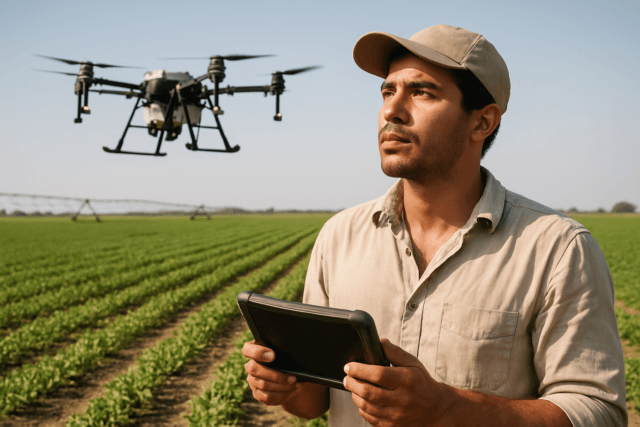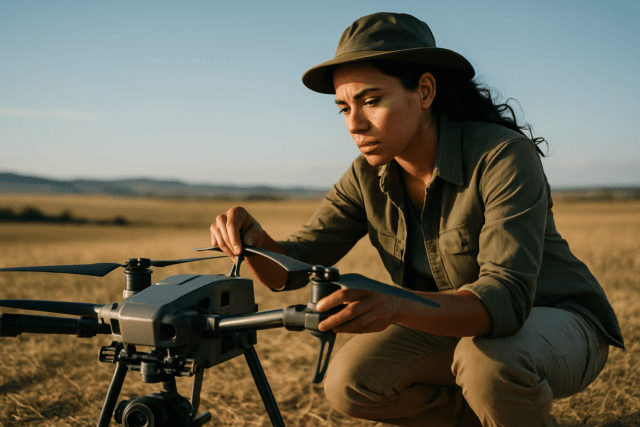Imagine a future where your urgent package arrives swiftly, not by road, but by air, gently descending from the sky. Drone delivery services promise unprecedented speed, efficiency, and reduced carbon emissions, poised to revolutionize last-mile logistics. However, this futuristic vision often collides with a formidable, unpredictable adversary: the weather. Adverse weather conditions present significant challenges to the widespread adoption and reliable operation of drone delivery systems, impacting everything from flight stability to package integrity.
Wind: The Unseen Force Affecting Drone Stability and Efficiency
Wind is arguably one of the most significant weather factors influencing Unmanned Aerial Vehicles (UAVs), directly affecting their flight stability, path, and energy consumption.
Destabilization and Increased Energy Consumption
Strong winds can easily destabilize drones, making it difficult for them to maintain a stable flight path and increasing the risk of erratic movements or even crashes. Smaller, lighter drones are particularly vulnerable to sudden gusts. To counteract these forces and stay on course, drones must expend significantly more energy, drastically reducing battery life and operational flight time. This limits the range and duration of delivery missions, impacting the economic viability of drone services. Most commercial delivery drones can typically operate safely in wind speeds up to 20 to 25 miles per hour; beyond this, risks increase significantly.
Navigation and Directional Challenges
Beyond just speed, wind direction poses complex challenges. Headwinds slow progress, delaying deliveries, while crosswinds can push drones off course, demanding constant, energy-intensive adjustments from the drone’s navigational systems. Wind shear—sudden changes in wind speed or direction—can cause abrupt shifts in position, hindering automated flight paths.
Precipitation: A Threat to Electronics, Sensors, and Package Integrity
Rain, snow, and hail are not just inconveniences; they pose direct threats to drone hardware, sensor functionality, and the integrity of the delivered package.
Electronic Damage and Malfunctions
Most commercial drones are not inherently waterproof, making their sensitive electronic components vulnerable to water ingress. This can lead to short circuits, system failure, and permanent damage. Even light rain can damage motors, sensors, and cameras.
Sensor Obstruction and Impaired Navigation
Precipitation can obscure camera lenses and other sensors, making it difficult for drones to perceive their surroundings, navigate effectively, and detect obstacles. Optical sensors (cameras) are particularly affected by rain and fog, while thermal sensors can be impacted by rain cooling surfaces unevenly or high humidity attenuating infrared radiation. GPS signals can also be degraded by heavy cloud cover or atmospheric disturbances.
Icing and Aerodynamic Impact
In cold, moist conditions, ice accumulation on drone surfaces like propellers can significantly alter aerodynamics, reduce lift, increase drag, and add considerable weight, potentially leading to stability issues or catastrophic loss of lift. Drones operating in such environments require specialized de-icing or anti-icing systems, which add complexity and cost.
Temperature Extremes: Degrading Performance and Durability
Both extremely high and low temperatures can severely degrade drone performance and component longevity, particularly affecting batteries and structural materials.
Battery Performance Degradation
Cold weather significantly reduces battery performance and capacity, leading to shorter flight times and reduced usable power. Batteries are especially sensitive to cold, which slows chemical reactions and can cause sudden drops in power. Conversely, high temperatures can cause lithium-polymer batteries to overheat, accelerating chemical processes, reducing their overall lifespan, and leading to shorter flight durations. Amazon’s latest MK30 drones, for instance, cannot operate in temperatures of 40 degrees Celsius (104 degrees Fahrenheit) or higher.
Material Brittleness and Overheating
Materials used in drone construction can become brittle in extreme cold or expand and contract in fluctuating temperatures, potentially affecting structural integrity. High temperatures can also cause electronic components to overheat, leading to malfunctions or system shutdowns.
Visibility and Atmospheric Phenomena: Hindering Safe Operations
Beyond precipitation, other atmospheric conditions can significantly limit a drone’s ability to operate safely and effectively.
Fog, Mist, and Cloud Cover
Fog, mist, and heavy cloud cover severely reduce visibility, making it difficult for both human operators and autonomous systems to maintain visual line of sight (VLOS), detect obstacles, and navigate accurately. This increases the risk of collisions and can even violate regulations requiring operators to maintain a certain level of visibility. The FAA, for example, requires at least 3 statute miles of visibility and for the UAV to be no less than 500 feet below a cloud for visual flight rules (VFR) operations.
Lightning and Electrical Storms
Electrical storms and lightning pose a significant and direct risk to drones in flight, making operations during such conditions extremely dangerous.
Regulatory and Technological Responses to Weather Challenges
Recognizing these challenges, drone manufacturers and delivery service providers are investing in advancements and operational strategies to enhance weather resilience.
Developing All-Weather Drones
There is active research and development into “all-weather drones” specifically designed to operate in extreme conditions, including heavy rain, snow, and high winds. Companies like Wing, Google’s sister company, have rigorously tested their drones in diverse climates, including the cold of Alaska and Finland and the heat of Texas, successfully completing hundreds of thousands of deliveries under less-than-ideal conditions. Some advanced drones, like DJI’s FlyCart 30, are water-resistant and can withstand temperatures between -20 and 45 degrees Celsius. Others, like the DJI Matrice 300/350, boast an IP55 rating, indicating protection against dust and water jets.
Advanced Sensors and Meteorological Tracking
Drones are being equipped with advanced sensors to monitor environmental conditions in real-time, allowing sophisticated flight control systems to adjust parameters autonomously. Integrating advanced meteorological tracking and Numerical Weather Prediction (NWP) models into operational planning helps operators anticipate adverse weather and reroute or reschedule deliveries.
Operational Limitations and Contingency Planning
Despite technological advancements, regulatory bodies often specify weather conditions under which drones are permitted to operate, based on factors like wind speed, visibility, and precipitation. This necessitates robust contingency planning, including alternative routes and emergency landing zones, to ensure safety and reliability.
While the promise of drone delivery is immense, the realities of adverse weather conditions present complex hurdles that the industry is diligently working to overcome through innovative engineering, advanced sensor technology, and strategic operational planning. The future of widespread drone delivery hinges on developing systems robust enough to consistently navigate the unpredictable elements of our skies.





